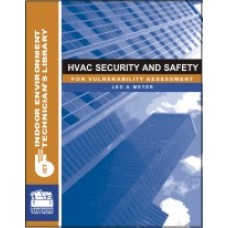As 2021 dawns, many office buildings sit idle while workers telecommute from home. Yet buildings still account for around 40% of our nation's energy use and consume 75% of our nation’s electricity.
The Facility Energy Decision System (FEDS) is an easy-to-use software tool that performs energy efficiency assessments by analyzing existing building energy use and identifying cost-effective savings opportunities. Pacific Northwest National Laboratory (PNNL) has developed the software tool to facilitate robust energy auditing and analyses to support energy efficiency, resilience planning, and project development. FEDS 8.0 supports a wide variety of structure types plus large multi-building campuses and installations.
A key attribute of FEDS 8.0 is the ability to initiate assessments with a limited detail of characteristics. FEDS fills in unknown details based on the parameters specified with a sophisticated internal inference generator whose results can be reviewed and updated as appropriate. As such, FEDS is well-suited for performing remote building audits and assessments — an especially useful feature during this time when so many are working from home.
FEDS is usable by anyone familiar with building energy systems and offers a unique mix of capabilities not found in any other energy analysis software tool, said Bob Dahowski, the PNNL engineer who leads FEDS development.
Most tools evaluate one building at a time. FEDS was designed to be highly scalable, and it excels at modeling individual buildings as well as campuses or installations, Dahowski added. This allows FEDS to capture the impact of electrical demand costs and savings more accurately for buildings served by a common billing meter.
“I’ve been working with FEDS to perform desk audits on more than 40 remote and unstaffed agency facilities across the U.S. over the past several months,” said Jensen King of Leidos Corp. “FEDS 8.0 is easy to use and well-suited for performing remote evaluations on these mission critical facilities to identify energy conservation measures and meet Energy Independence and Security Act compliance for auditing every four years.”
Proven Capabilities
The tool simulates building systems, including building shell, lighting, heating, cooling, ventilation, and water heating technologies. It calculates loads and energy use to analyze the cost and performance impact of thousands of potential efficiency measures.
“We have used FEDS on individual buildings ranging from 2,000 square feet to more than 100,000 square feet as well as a seven-building campus,” said Robert Lowe of Building Dynamics LLC. “It allows us to demonstrate compliance with federal energy goals, facilitates recurring assessments, and provides a list of potential energy savings projects along with the economic analysis associated with implementing each.”
The software automatically evaluates thousands of candidate energy efficiency measures to identify those offering the greatest savings for the building’s specific combination of conditions, based on life-cycle costing. This algorithm weighs project capital costs against expected savings in energy and demand costs, operations and maintenance costs, and component replacement costs. Project capital cost estimates include specific components, such as equipment and materials, labor, plus typical overhead, and tax rates. A variety of output reports help building owners make informed decisions on upgrades.
FEDS helps building owners and energy managers with their comprehensive energy efficiency and resilience planning goals. In addition to identifying energy and cost savings, other key applications of FEDS include:
• Performing in-person, as well as remote facility audits and assessments;
• Simulating building system loads for sizing of renewable energy, backup generation, or microgrid systems;
• Specifying and analyzing central energy plants and their associated distribution loops, which deliver steam, hot water, or chilled water to meet building loads;
• Reporting air emissions impacts of building energy use and recommended savings measures; and
• Evaluating the impacts of various types of change to building systems, technologies, occupancy, climate, and energy rates.
Development of FEDS was supported by the U.S. Department of Energy’s Federal Energy Management Program in coordination with several additional government agencies.
Streamlined Licensing Process
FEDS 8.0 is available for licensing through PNNL’s Technology Development Office. Pricing is based on the user type and size of organization. For more information on obtaining a license for FEDS, contact Sara Hunt, PNNL technology commercialization manager.
“We strive to move at the speed of business with flexible licenses and transparent terms,” said Hunt. “Our goal is to get the software to you as quickly as possible, so you can start enhancing your facility energy efficiency.”








